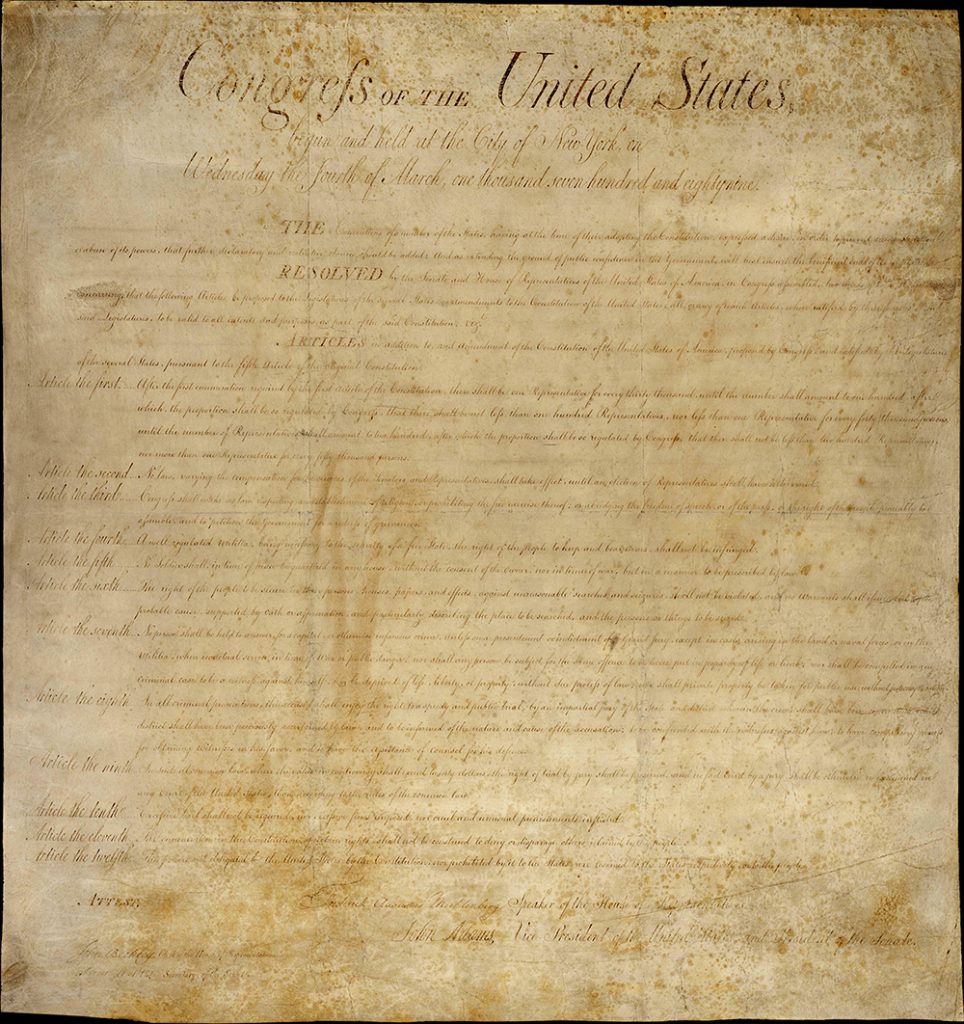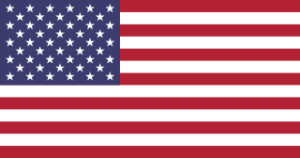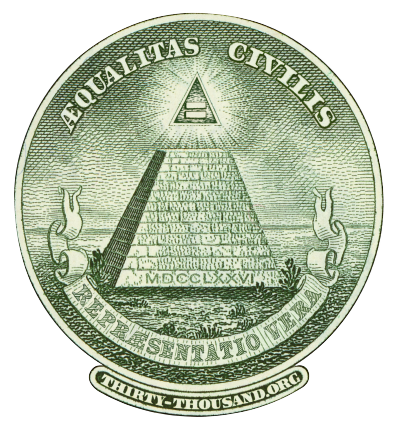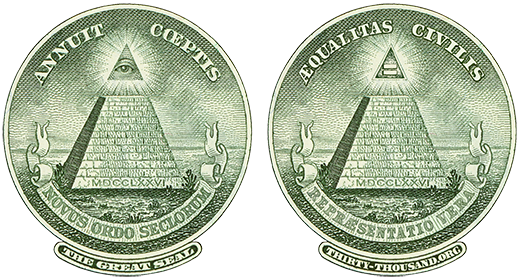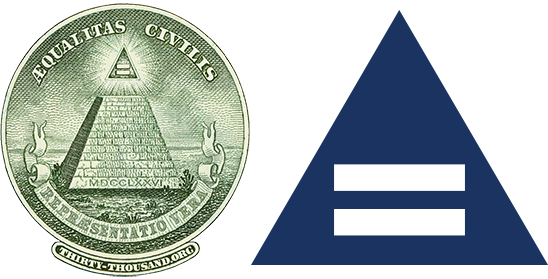The Bill of Rights
The First Congress Proposed Twelve Constitutional Amendments
Proposed by the First Federal Congress on September 25, 1789, the original Bill of Rights document is displayed in the Rotunda of the National Archives in Washington, D.C. Though it has been viewed by millions, few people realize that the very first amendment inscribed in the Bill of Rights was never ratified due to an inexplicable defect in its wording that rendered it nonsensical. What was the intended purpose of that amendment?
The Bill of Rights document contains twelve articles of amendment. Of those twelve, only the last ten were ratified to the U.S. Constitution prior to 1791. As a result, our Constitution’s “First Amendment” had originally been proposed as “Article the third,” and the “Second Amendment” was originally “Article the fourth,” and so forth.
The Bill of Rights’ “Article the second” was not ratified until 200 years later — as the 27th Amendment — which finally limited Congress’ ability to increase its own compensation.
And “Article the first” — the very first amendment proposed in the Bill of Rights — was never ratified. The intended purpose of Article the first was to establish a maximum congressional district size of 50,000 people in order to ensure the federal House of Representatives was a truly representative body. However, during the waning hours of the First Congress, an small alteration was made to the wording of this amendment which had the effect of rendering it meaningless.
Explore More Topics:
